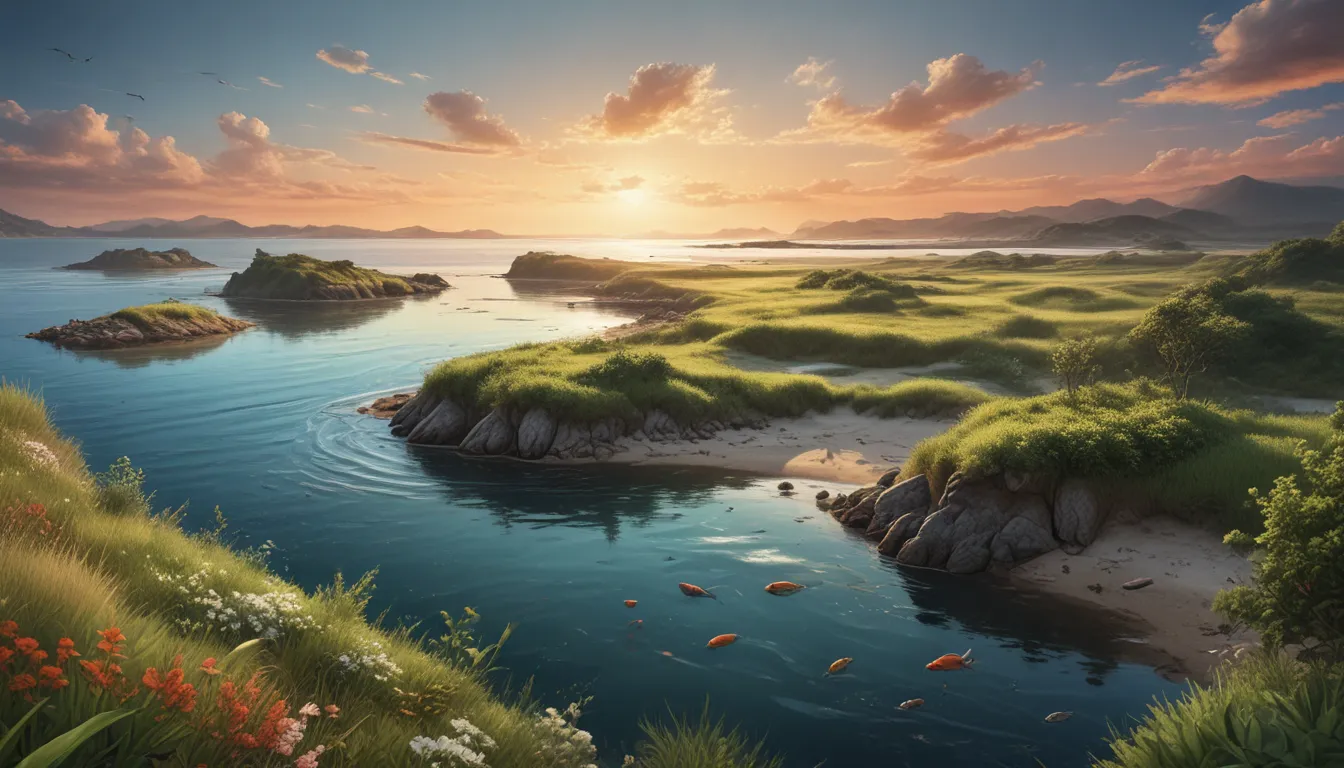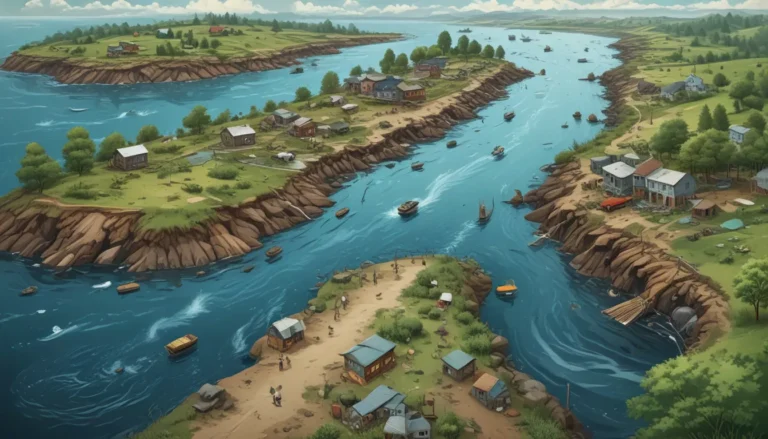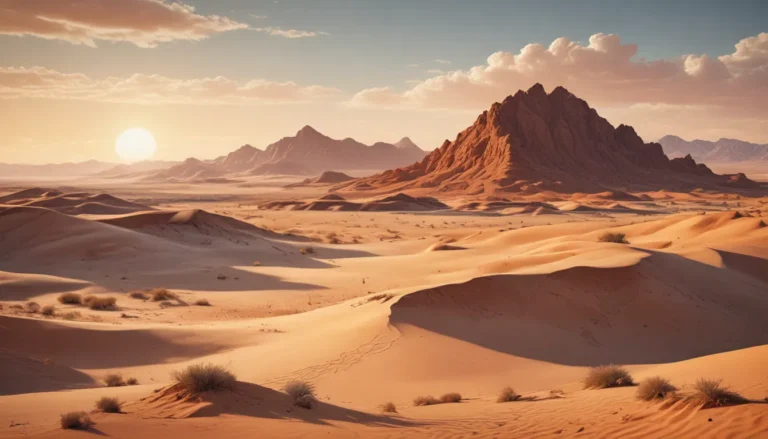A Note About Images: The images used in our articles are for illustration purposes only and may not exactly match the content. They are meant to engage readers, but the text should be relied upon for accurate information.
Welcome to the world of estuaries, where freshwater rivers blend harmoniously with the salty ocean, creating vibrant and diverse ecosystems that are both fascinating and crucial for our planet. In this article, we will delve into the incredible world of estuaries, uncovering 18 intriguing facts that highlight their importance and beauty. Whether you are a nature enthusiast, a curious explorer, or simply intrigued by the wonders of our world, these facts will leave you in awe and eager to learn more about these unique environments.
Key Takeaways:
- Estuaries are dynamic ecosystems that support a wide range of species, filter pollutants, and provide recreational opportunities. Protecting and conserving these habitats is vital for the well-being of both nature and humanity. – From serving as important breeding grounds to mitigating climate change, estuaries play multifaceted roles in maintaining the health of our planet. Understanding and appreciating the significance of estuaries is essential for their long-term preservation and sustainability.
Unveiling the Mysteries of Estuaries
Estuaries are where the magic happens – the meeting point of freshwater flowing from rivers and streams and the salty embrace of the ocean. These unique ecosystems are renowned for their rich biodiversity and serve as critical habitats for a plethora of plant and animal species.
Discovering the Productivity of Estuaries
Thanks to the nutrient-rich concoction of freshwater and seawater, estuaries are bustling hubs of productivity. The blending of nutrients and sediments creates an ideal environment for abundant plant growth, which, in turn, supports a diverse array of species.
Unleashing the Power of Natural Filters
The vegetation present in estuaries acts as a natural filtration system, trapping sediments and filtering pollutants to improve water quality. This vital function not only benefits the ecosystem but also protects coastal areas from the harmful impacts of pollution.
Embracing Estuaries as Breeding Grounds
Estuaries play a crucial role in the reproduction and development of numerous species, including fish, crustaceans, and birds. The nurturing environment provided by estuaries offers ideal conditions for breeding and supporting the growth of offspring.
Embarking on a Journey in Dynamic Environments
The ebb and flow of freshwater and saltwater create a dynamic and ever-changing ecosystem within estuaries. Tidal fluctuations and salinity variations contribute to the uniqueness and resilience of these captivating environments.
Reveling in Recreational Opportunities
Estuaries offer a cornucopia of recreational activities for all to enjoy. From fishing and boating to birdwatching and wildlife observation, these coastal paradises attract visitors seeking solace and appreciation of nature’s beauty.
Standing Tall as Coastal Protectors
The complex coastal features and vegetation of estuaries act as natural barriers, shielding coastlines from erosion, storm surges, and the wrath of hurricanes. Their protective role is indispensable in safeguarding coastal communities and ecosystems.
Nurturing Commercial Fisheries
Estuaries serve as vital nursery areas for many commercially important fish species, such as salmon, trout, and shellfish. These ecosystems provide essential food and shelter for the growth and sustainability of these valuable fish populations.
Championing Climate Change Mitigation
The vegetation within estuaries, from marshes to mangroves, acts as a carbon sink, sequestering significant amounts of carbon dioxide from the atmosphere. This crucial function aids in mitigating the impacts of climate change and promoting environmental stability.
Embracing the Diversity of Unique Species
Estuaries harbor a vast array of specialized species that have adapted to the brackish water conditions, including marsh grasses, oysters, and fiddler crabs. The richness of biodiversity within estuaries is a testament to the resilience and beauty of these ecosystems.
Supporting Migratory Birds on Their Journeys
Many migratory birds depend on estuaries as stopover points during their long-distance travels. These vital areas provide essential food resources and rest stops for birds navigating between their breeding and wintering grounds.
Nurturing the Balance of Human Activities
The delicate balance of estuaries is threatened by human-driven activities such as pollution, habitat destruction, and overfishing. To ensure the conservation and sustainability of these valuable ecosystems, it is imperative to prioritize their protection and responsible management.
Energizing Estuarine-Dependent Economies
Estuaries play a significant role in supporting local economies through commercial fishing, tourism, recreational activities, and other industries reliant on the resources and services provided by these ecosystems. The economic value of estuaries highlights their importance in promoting prosperity and sustainability.
Engaging in Educational Experiences
As ecological hotspots, estuaries offer unique learning opportunities for students and researchers interested in studying marine and coastal ecosystems. These outdoor classrooms provide valuable insights into the intricate workings of these vital habitats.
Honoring Cultural and Historical Connections
Many estuaries hold cultural and historical significance for indigenous communities, serving as sacred sites for traditional practices, storytelling, and ancestral heritage. The historical roots embedded in estuaries enrich our understanding of their importance and value.
Confronting Climate Change Challenges
The looming threats of rising sea levels, heightened storm intensity, and shifting rainfall patterns due to climate change pose significant challenges to estuaries and their associated ecosystems. Adapting to these changes is crucial in securing the long-term health and resilience of estuarine environments.
Sustaining Diverse Food Webs
Estuaries host intricate food webs composed of interconnected species, ranging from primary producers to consumers and decomposers. This interconnected web of life sustains the overall health and balance of estuarine ecosystems, showcasing the importance of every organism within the ecosystem.
Advocating for the Protection of Estuaries
With their immense ecological, economic, and cultural value, estuaries are undeniably worth protecting and preserving. By prioritizing their conservation, restoration, and sustainable management, we can ensure the continued well-being and prosperity of these invaluable natural resources for generations to come.
Conclusion: Embracing the Splendor of Estuaries
Estuaries stand as beacons of biodiversity, productivity, and resilience, offering a sanctuary for countless species and providing essential services to humans and wildlife alike. From filtering pollutants to supporting commercial fisheries, these dynamic ecosystems play a multifaceted role in maintaining the health of our planet.
By recognizing the intricate balance of estuarine ecosystems and the myriad benefits they offer, we can cultivate a greater sense of appreciation and stewardship for these invaluable habitats. Let us treasure and protect estuaries as the precious natural treasures they are, ensuring a sustainable future for ourselves and the generations to come.
FAQs: Exploring the World of Estuaries
-
What defines an estuary?
An estuary is a partially enclosed coastal water body where freshwater from rivers and streams mixes with saltwater from the ocean, creating a unique blend of habitats and ecosystems. -
How do estuaries form?
Estuaries form through a combination of coastal geomorphology, sea level changes, and the input of freshwater and sediment from rivers and streams, resulting in the distinctive characteristics of these dynamic environments. -
Why are estuaries essential?
Estuaries are vital for a variety of reasons, serving as critical nurseries for fish species, habitats for diverse wildlife, filters for pollutants, and protectors of shorelines from erosion. -
What plant and animal species can be found in estuaries?
Estuaries support a wide array of plant and animal species, including seagrasses, saltmarsh plants, oysters, crabs, fish, and shorebirds, each playing a unique role in the interconnected web of life within these ecosystems. -
Is it safe to swim in estuaries?
Swimming in estuaries is generally safe, provided there are no specific alerts or warnings issued for the area. However, it is essential to be aware of potential hazards such as strong currents, underwater obstructions, and pollution. -
How can estuaries be protected and conserved?
Estuaries can be protected and conserved through sustainable fishing practices, pollution reduction efforts, habitat preservation, restoration initiatives, and community engagement to promote awareness and involvement in estuarine conservation. -
Are estuaries impacted by climate change?
Estuaries are vulnerable to the impacts of climate change, including sea-level rise, storm intensity changes, and ocean acidification, highlighting the urgent need to address these challenges and safeguard the health and resilience of estuarine ecosystems. -
Can I visit estuaries for recreational activities?
Yes, many estuaries offer a host of recreational opportunities, including boating, kayaking, fishing, birdwatching, and hiking, providing a chance to connect with nature and appreciate the beauty and diversity of estuarine environments.
We strive to deliver accurate and engaging content, ensuring that each fact shared is not only captivating but also credible. Our commitment to quality and authenticity is paramount as we invite you to explore and learn with us, uncovering the wonders of estuaries and the vital role they play in sustaining life on Earth.






